Bukhara, Uzbekistan, 30 September 2018.
(Click on any image to see it in a larger size.)
.
Ark is the Persian word for fortress, so this is the Ark of Bukhara.
The area in the foreground and out to the left is part of what was the Registan, an open area bustling with life and functioning as a market place, public square and execution ground.
We have nine images of the outside walls. The first six are taken with a Fuji 10-24mm lens (equivalent to 15-36mm in full frame) and they show perspective distortion. Say you take a photograph of someone holding their fist out to the camera, you are very close to the fist and everything is in focus. The fist would appear huge and the rest of the person very small. So that is perspective distortion and it’s what we logically see, though our brain processes it to make more sense. The the last three images are taken with a 12mm Samyang fisheye lens, so they go beyond that to also have fisheye distortion, though the last two are partially corrected.
There has been a town here since maybe 500BC, though people were here before then and not much is known about that. At that time it was part of the Persian Empire and was taken by Alexander the Great in 329BC. Over the years there was a succession of different invaders, often with devastating results for Bukhara. It was part of the (Greek) Selucid Empire, the Kushan Empire, then the (Mongol) Hephalite Empire. From 650 to 750AD, the Arabs slowly and intermittently took control, displacing Zoroastrianism and other religions with the Islam.
Then the Samanids took power in Bukhara in 892 and brought a restoration of Persian culture and language. During the tenth century Bukhara was the capital of their empire, that at its peak (in modern terms) included Uzbekistan, Tajikistan, Afghanistan, Turkmenistan and north-east Iran. It also during that period became a world centre of learning, far surpassing anywhere in the decadent post-Roman West.
After that was a period of decline. Bukhara fell to the Karakhanids in 999, the Karakhitai in 1141 and Koresemshah in 1206. Genghis Khan took and razed the city in 1220, declaring himself the Scourge of God. “If you had not committed great sins, God would have not sent a punishment like me.”
In 1500, an Uzbek Shaybanid dynasty took over. The Timurids had a brief comeback under Babur in 1511 but he was defeated in 1512 and left, instead to conquer India. The Shaybanids for a while brought a new period of prosperity and artistic accomplishment. The Ark has been created and destroyed many times over the years but the present for dates from the Shaybanids and the buildings are all from within the last three centureies. An Astakhanid dynasty took over in 1552 and slowly Bukhara declined from a major force to a regional power.
In 1840, most of the brickwork in the walls you see here did not exist. There was instead an artificial hill with a much smaller wall at the top. The brickwork was added later in the nineteenth century. In 1868, Russia defeated Bukhara and it became a Russian protectorate, though the Emir retained arbitrary and absolute power within the city of Bukhara.
In 1918, a Bolshevik army from Samarkand arrived to take the city but the locals preferred to stay with the Devil they knew (or Islamic Emir as the case might be) and the army was defeated. So Bukhara remained as a relic Mediæval enclave for a couple of years.
In 1920, a more competent Soviet army appeared at the city gates, the city was taken and in the fighting the wooden buildings inside the Ark were destroyed by bombing and fire. Most of what lay within the walls of the Ark remains destroyed. From 1920 to 1924 there was the Bukharan People’s Soviet Republic and then it became part of Uzbekistan (which itself became independent in 1991).
So here we are at the gate to the Ark.
I think this is the former living quarters of the Emir’s kushbegi (Prime Minister), now housing an archaeological museum.
.
An ancient petrograph from the museum. Perhaps a leopard and a pair of ibex. The label only said it came from Uchtut, which is a location about 150 kilometres south east of Bukhara. They are probably from something like 3,000 to 4,000 BC.
.
The Reception and Coronation Court, a large open-air iwan, where the Emir could meet or address people en masse.
.
And here he is, the Emir, terror of the population, from a nineteenth century photograph using a digital camera smuggled in by a European.
In 1838, Colonel Charles Stoddart arrived in Bukhara, seeking to reassure the Emir about British troop movements beyond the border. However, he was not acquainted with local custom and rode into the Ark rather than leaving his horse behind and later prostrating himself before the Emir. He was cast into a caged hole that he shared with rats. When the British occupied Kabul and might later have had designs on Bukhara, he was taken out to the custody of the Chief of Police and allowed proper food and clothing. Then when the British were defeated in Afghanistan, he was cast beck in the hole again. In 1840, Captain Arthur Connelly turned up to try to persuade the Emire of the benefits of closer association with Britain and after a while he was thrown in the hole as well. In 1842 they were executed.
Nineteenth century Bukhara was a somewhat polygot city including Jews, Afghans, Armenians, Russians, Persians, Chinese and Hindus. It was also a health disaster, with fetid water for long periods producing epidemics and reshta, a vile parasitic worm. It was also cruelly despotic and a strange mixture between licentious depravity and ruthless enforcement of minor religious norms.
Ah, that’s right, I remember now. I actually took that photograph. It’s not from the nineteenth century. The boy’s father paid a small amount for him to dress up and pose on the throne. Unaccompanied in nineteenth century Bukhara though, the boy would have been in severe danger from the Emir.
Nowadays though, Bukhara and Uzbekistan generally is very friendly and welcoming.
.
A tourist being led around the Ark on a camel ride, in a faint echo of a now distant past.
.
We are now inside the Bolo-Khauz Mosque, part of the few surviving structures on the Registan. It was built in 1712 by the Emir’s wife. I do not seem to have photographed the outside.
.
This is the main prayer hall.
.
This time, with the fisheye lens.
.
This is the Chasma-Ayub Mausoleum. I don’t seem to have photographed inside so perhaps it was closed or photography not permitted. It has four domes from different periods and with different architecture. The earliest, the conical one, is from the time of Timur in 1380.
.
This is the Israel Samani Mausoleum. It dates from the tenth century, the period of the great cultural flowering of Bukhara and is named after the founder of the Samanid Dynasty. It incorporates elements of earlier Sogdian and Sassanian/ Zoroastrian architecture. It escaped the depredations of Genghis Khan because it had become buried under sand and earth and was rediscovered in 1934 by a Soviet archæologist. The tombs were then removed by the Soviets. This Samanid mausoleum was a model for many of the fourteenth to seventeenth century mausolea of India.
.
A view of the symmetrical interior.
.
Looking up at the dome (with some fisheye distortion)…
.
… and a closer (rectilinear) view.
.
I’m not sure what structure this is; I presume it was visible from the rooftop restaurant we attended that night.
.
And this is the top of the Kalyan Minaret from a distance. we saw it more close-up in daylight in the previous post.
.
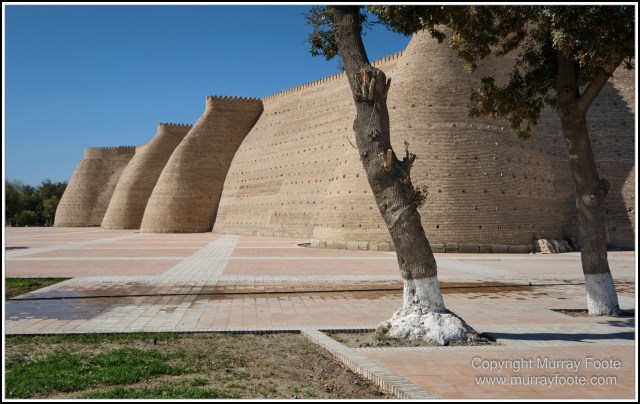
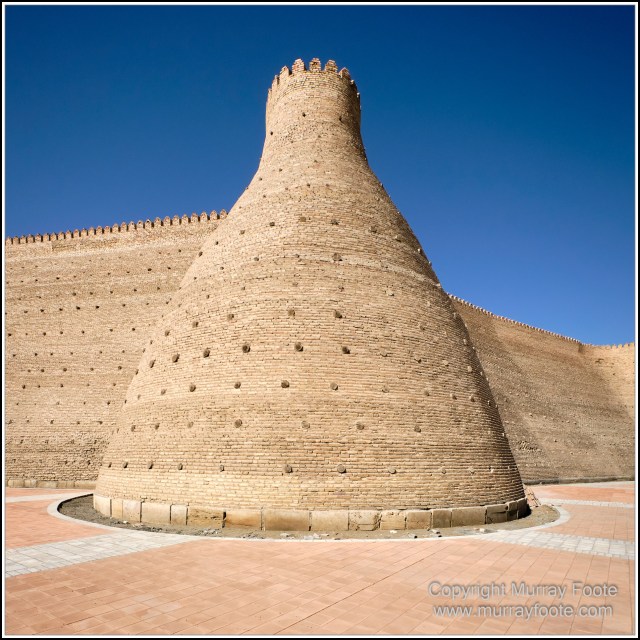
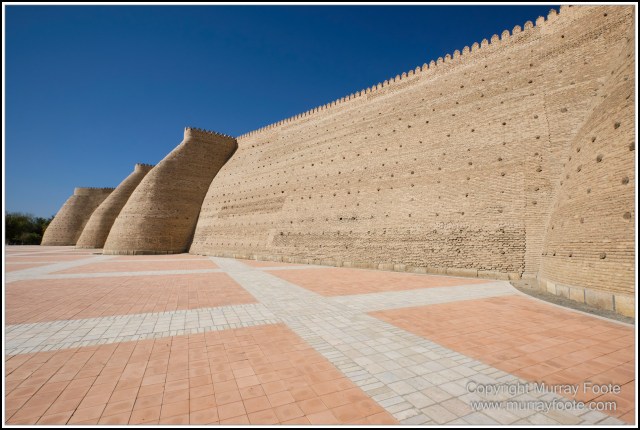
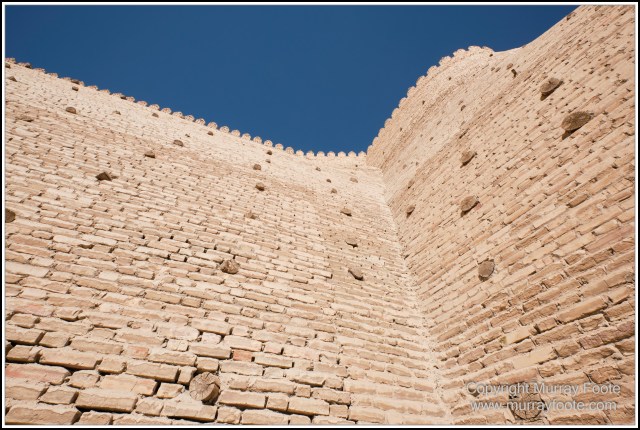


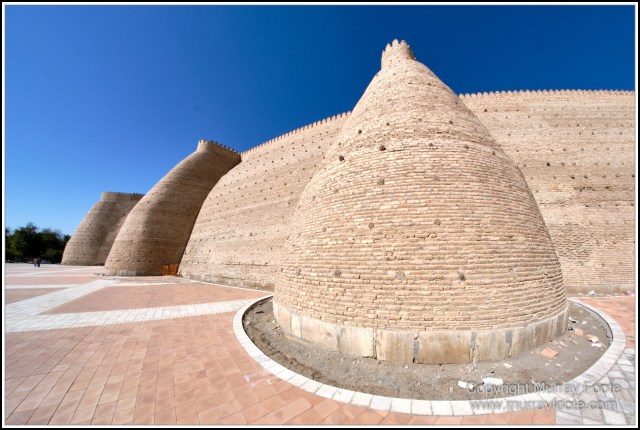


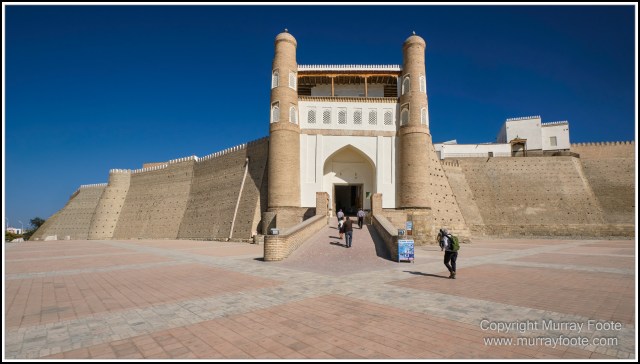
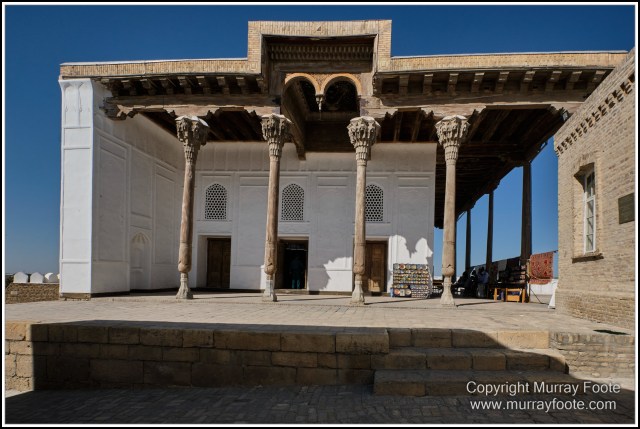
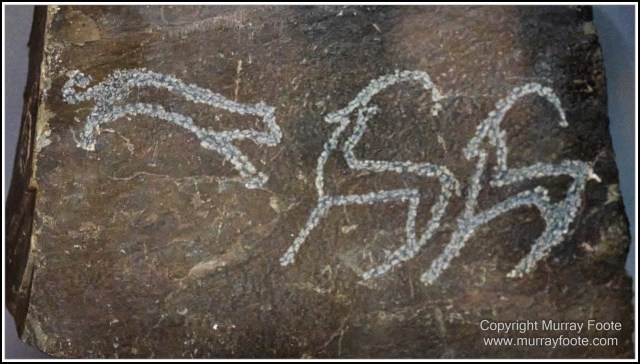
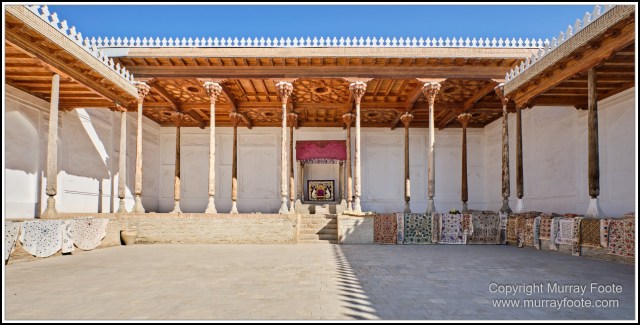
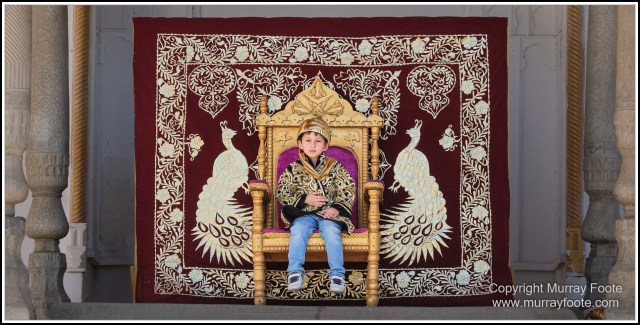
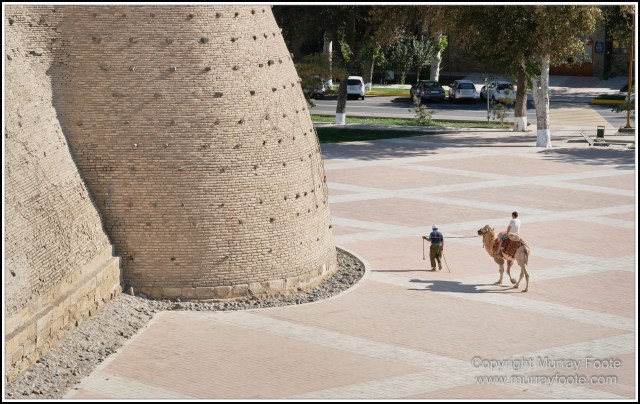
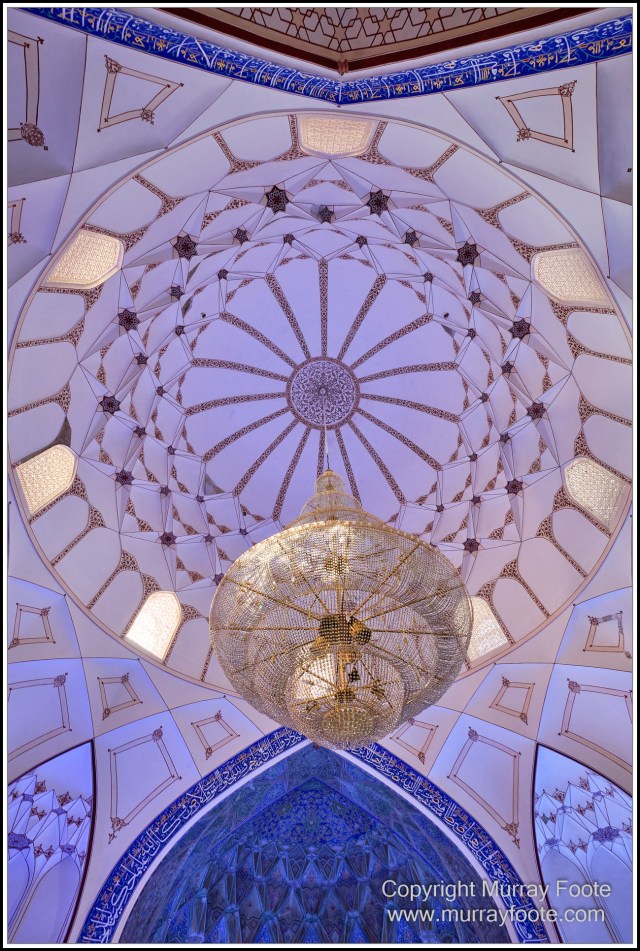

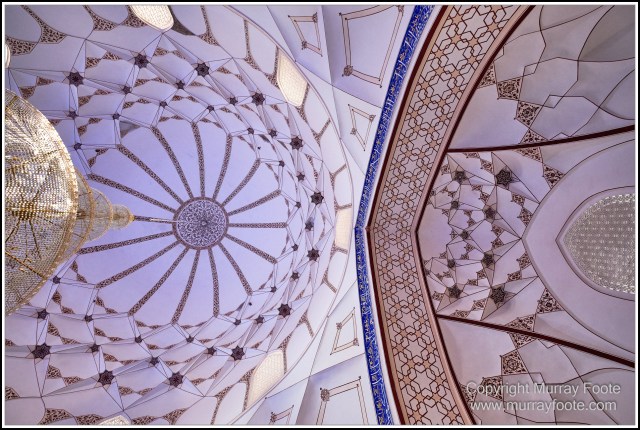


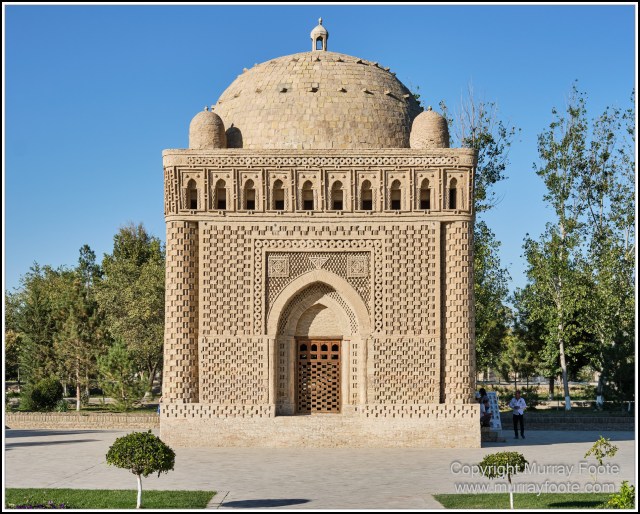
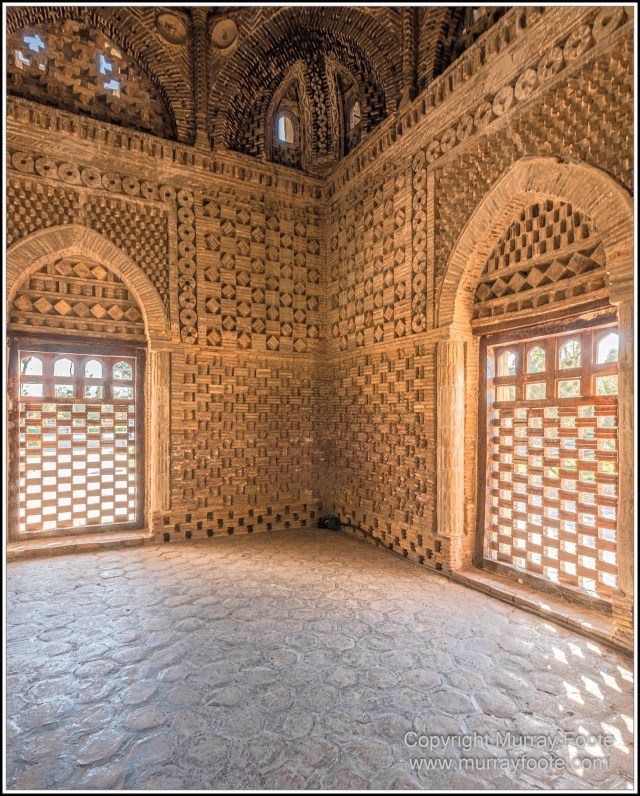
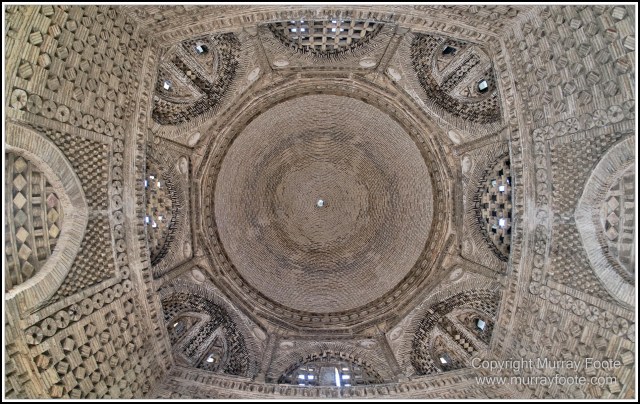
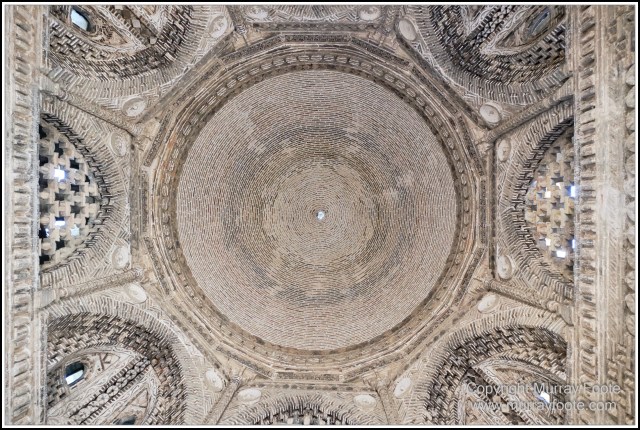
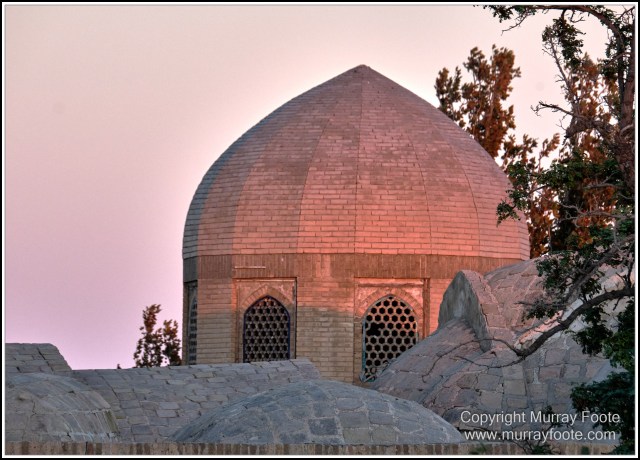
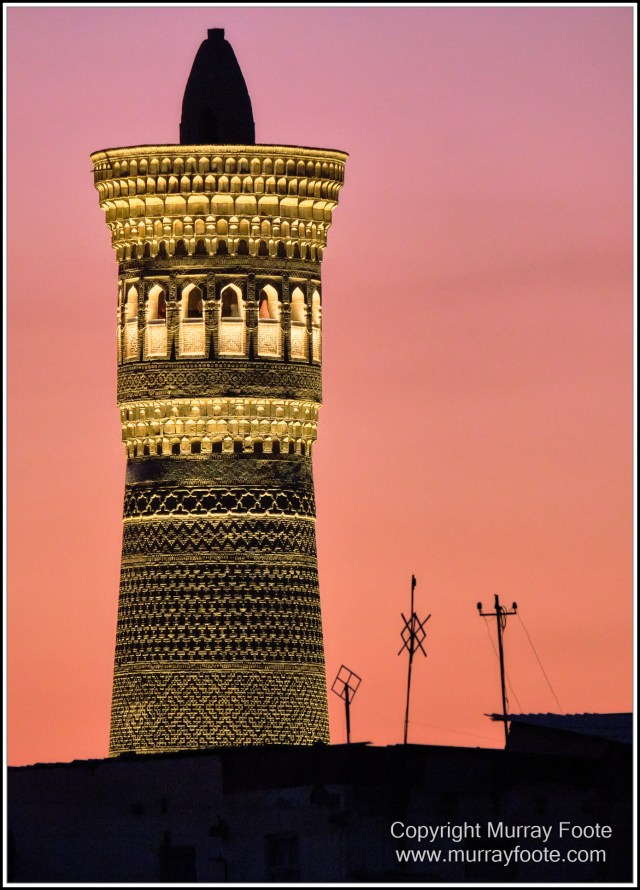
Not sure we saw the prayer hall. Thanks.
LikeLiked by 2 people
No shortage of amazing things to see…
LikeLiked by 2 people
Pingback: Uzbekistan, Crete, Spain and Oregon Itinerary « Murray Foote
Pingback: Monochromes from Bukhara (Part 2) « Murray Foote